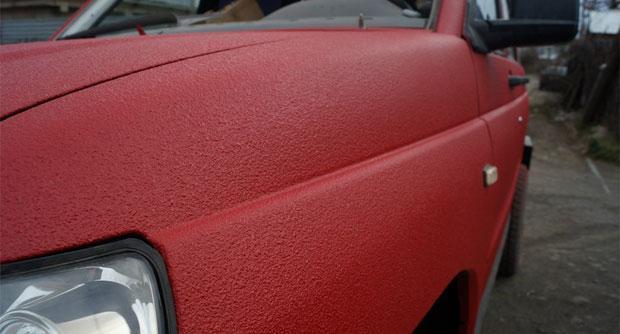
Protective coating "Titanium" for cars. Tests and comparisons
Paint "Titan": what is it?
"Titan" is not quite a standard product in terms of paintwork generally accepted in the automotive world. Paint "Titan" is a special composition created on the basis of a polymer: polyurethane.
In terms of composition, the Titan coating works in much the same way as other similar paints: Raptor, Molot, Armored Core. The difference is that "Titanium" forms a harder and thicker layer. On the one hand, this feature allows you to create a coating that is more resistant to external influences. On the other hand, the paint "Titan" is a little more expensive than its counterparts and requires more consumption when painting.
The principle of operation of the composition "Titan" is quite simple: after applying to the surface to be treated, the polyurethane interacting with the hardener hardens and creates a solid protective layer. This layer protects the surface of metal or plastic from UV rays, moisture, chemically aggressive substances.
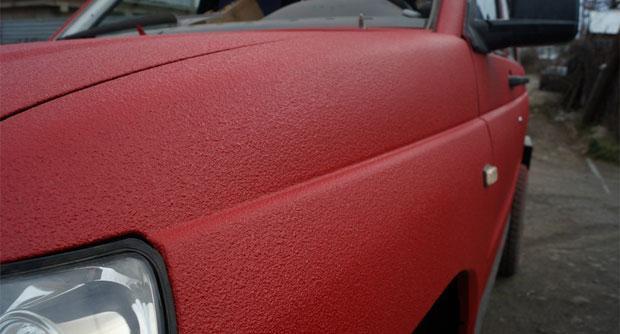

The most pronounced property of Titan paints is the protection of car body parts from mechanical stress. In terms of its ability to withstand damage, this polymer coating has no analogues.
After being applied to the body, the paint creates a relief surface, the so-called shagreen. The size of the shagreen grain depends on the amount of solvent in the ready-to-use paint, the design of the spray nozzle and the painting technology used by the master. By changing the above conditions, the shagreen grain size changes.
This feature is both a plus and a minus. The advantage is that by changing the painting conditions and the proportions of the components, you can choose the shagreen to suit the taste of the car owner. The downside is the complexity of the restoration work. It is technically difficult to locally tint the damaged area and recreate the shagreen texture that was obtained during the initial painting.
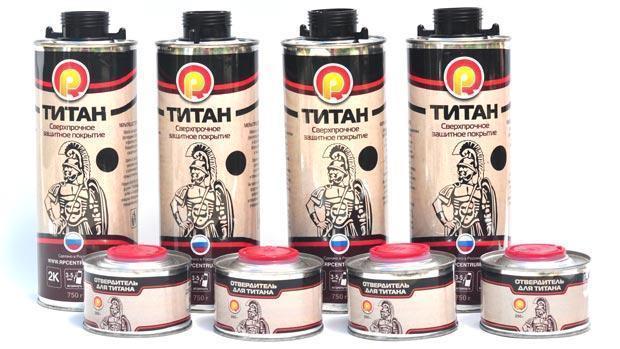

Buy paint "Titan"
Painting Features
One of the negative features of the coating "Titan" is low adhesion to other surfaces. The composition does not adhere well to any materials and tends to locally move away from the painted element. The paint itself, after drying, creates something like a hard shell, it is difficult to destroy the integrity of which on a static surface (which does not deform under external influence). But to separate this coverage entirely from the element is quite simple.
Therefore, the main stage of preparation for painting with the composition "Titan" is a thorough matting - the creation of a network of microgrooves and scratches to increase adhesion. After surface washing of the car, with sandpaper or an abrasive grinding wheel with coarse grain, the body is matted. Moreover, it is important that the microrelief is created on every square centimeter of the bodywork. In those places where the body will be poorly matted, local peeling of the paint will form over time.


After matting the body, standard preparatory procedures are carried out:
- dust blowing;
- thorough, clean washing;
- removal of local centers of corrosion;
- degreasing;
- dismantling of removable elements that will not be covered with paint;
- sealing openings and those elements that cannot be removed;
- applying primer (usually acrylic).
Next comes the paint. The standard mixing ratio is 75% base paint, 25% hardener. Colorizers are added in the volume necessary to obtain the desired color. The amount of solvent is selected depending on the required shagreen texture.
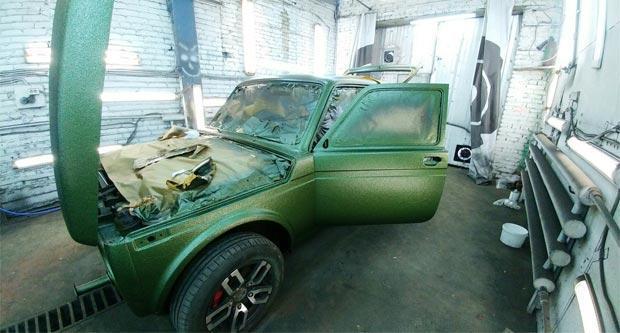

The first layer of automotive paint "Titan" is adhesive and becomes thin. After it dries, the body is blown into another 2-3 layers with intermediate drying. The thickness of the layers and the intervals for drying the previous coatings are individual and are chosen by the master personally, depending on the painting conditions.


Watch this video on YouTube
Reviews after operation
Motorists are ambivalent about their experience with a Titan painted car. Let's take a look at the positive reviews first.
- Bright, exclusive in its own way appearance. Titanium paints look especially beautiful on SUVs and other large-sized cars. Motorists note that they are often approached in parking lots and gas stations with the question: what kind of paint is this on a car?
- Really high protection against mechanical impact. Those motorists who participate in off-road rallies, hunt and fish, or simply often drive through wooded and difficult terrain, note the excellent protective properties of the Titan paint. Various video hosting sites and forums have test reports of these paints. Scratching with nails with effort, hitting with sharp objects, sandblasting - all this causes only slight damage to the top layer of the coating. After washing, these damages are almost completely masked. And if washing does not help, surface heating of the area with a hairdryer comes to the rescue. Shagreen leather is partially softened, and scratches are healed.
- Relatively low price with such high protective properties. The fact is that when painting a car in Titan, you don’t need to completely remove the old paint and rebuild this kind of “pie” from primers, putties, paints and varnishes. If the paintwork does not have significant damage, it is enough to locally remove rust and mat the surface. And even taking into account the high price of the paint itself, the final cost of the complex of painting works does not differ much from the standard repainting of a car.


There are paint "Titan" and disadvantages.
- Frequent local detachment. Whereas regular paint only chipped at the point of impact, Titanium paint could peel off in large patches in places with poor adhesion.
- The complexity of local repair of the coating. As mentioned above, the paint "Titan" is difficult to match the color and grain size of the shagreen in local repairs. And after the repair, the newly painted area remains clearly visible. Therefore, motorists often do not restore the Titan paint locally, but at some point they simply completely repaint the car.
- Decreasing over time corrosion protection. Due to weak adhesion, sooner or later, moisture and air begin to penetrate under the paint "Titan". Corrosion processes develop secretly, since the coating itself remains intact. And even if the bodywork is completely rotted under a layer of paint, outwardly it may not be noticeable.
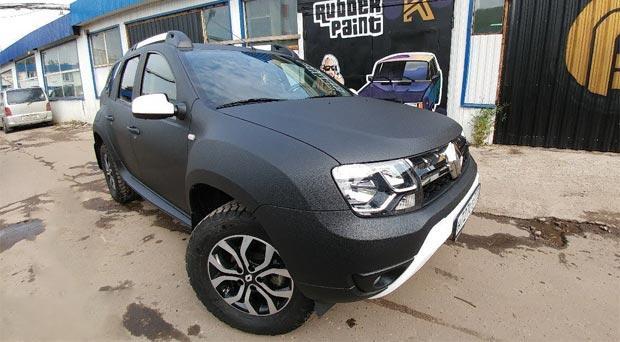

In general, you can repaint a car in Titan paint if you often operate a car over rough terrain. It resists mechanical stress much better than standard paintwork. For cars that are mainly operated in the city, this coverage makes little sense.


